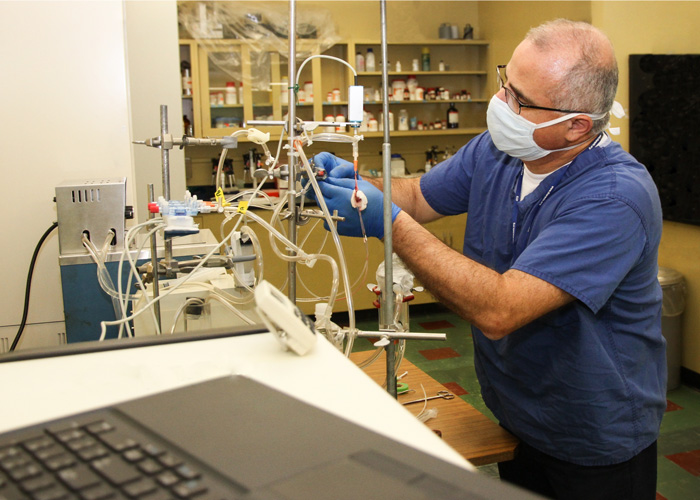Zabre González Dissertation Abstract
Continuous Myoelectric Prediction of Future Ankle Kinematics and Kinetics for the Control of Active Powered Lower Limb Prostheses
Dissertation Date: August 11, 2022
The purpose of this dissertation is to develop a continuous predictive model of gait that incorporates user intent, vis-à-vis surface electromyography (EMG) signals of the lower limb, to continuously predict future ankle kinematics and kinetics across multiple terrains and their transitions for the control of an active ankle-foot prosthesis. Continuously predicting variations in gait, particularly during transitions and noncyclic activities, is limited in lower limb prostheses. Despite performance improvements in active lower limb prostheses, there remains a need for robust and accurate control that incorporates direct user intent (e.g., myoelectric control) to limit physical and cognitive demands and provide more natural gait across terrains. Efforts to use EMG signals have mainly focused on discrete control approaches that are reactive to changes in terrain, can introduce undesirable delays, and limit the amputee’s control over the prosthesis. A nonlinear autoregressive neural network with exogenous (external) inputs (NARX) was used to continuously predict desired ankle angle and moment of the sound limb of transtibial amputees using EMG of the prosthetic side and sound-limb shank velocity as inputs. The approach of mapping prosthetic-side EMG with sound-limb ankle dynamics is a step forward to restore normal gait by overlaying the dynamics of the sound limb onto the prosthesis to create more symmetric gait patterns. The autoregressive model accurately predicted (up to 142 milliseconds ahead of time) ankle dynamics using natural patterns of within-socket residual or upper-leg (thigh) EMG of the prosthetic side across ambulation conditions (level walking, stair ascent, and stair descent) and staircase transitions. Importantly, the model leveraged EMG and shank velocity inputs to a similar degree for the prediction of gait, enabling accurate responses to noncyclic events. The NARX model also had the ability to characterize the full range of ankle dynamics of able-bodied individuals using either lower-leg or upper-leg muscle activity. The use of natural, yet altered in amputees, muscle activity with information about limb state, coupled with a closed-loop predictive design, could provide intuitive user-driven and robust prosthetic control capable of counteracting delays and proactively modifying gait in response to observed changes in terrain. The model provides opportunities for continuous myoelectric control using different muscle groups and takes an important step toward continuous real-time feedback control of active lower limb prostheses and robotic systems.
Return to Dissertation Schedule


